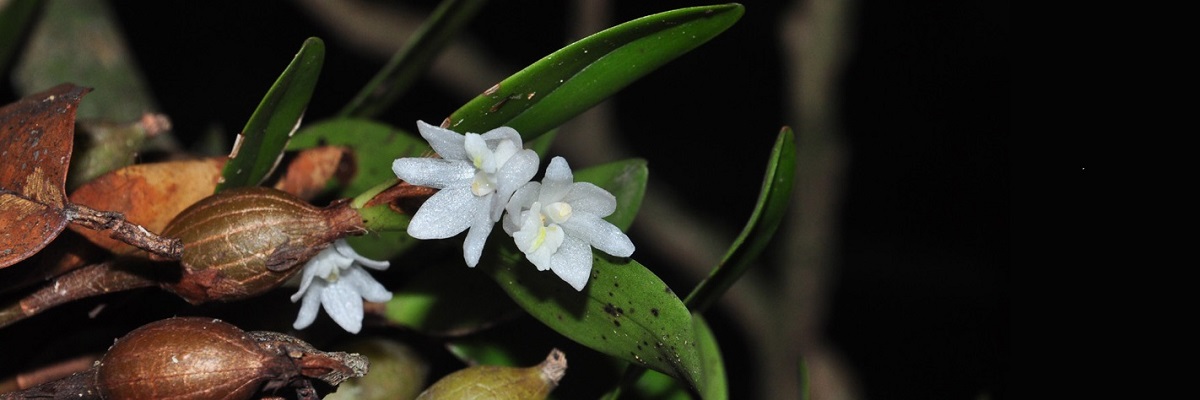Effects of selective logging on epiphytes
– Savyasachee Jha

Vascular epiphytes are plants like ferns and orchids that grow on other plants and have an internal transport system for water and nutrients. They do not require a direct connection to the soil, and are integral to treetop-ecosystems. A recent study by KS Seshadri, a DST-INSPIRE Faculty Fellow at the Centre for Ecological Sciences, IISc and collaborators at ATREE, looks at the impact of selective logging – the practice of removing a small number of trees from a forest while leaving the rest intact – in the Western Ghats. They find that the impact of logging can persist up to forty years after it stops.
The researchers surveyed epiphytes in trees in unlogged forests and in forests which were selectively logged till the 1980s. They counted 2,129 individual epiphytes belonging to 20 species growing on 22 species of host trees in a 900 square km area. To their surprise, selectively logged forests showed a greater abundance of epiphytes compared to unlogged forests.
The researchers say that this should not be interpreted to mean that they support expanding selective logging efforts. While the practice prevents the destruction of forests, the resulting changes in epiphyte cover are yet not well understood.
This work opens up possibilities of studying how human activity affects other organisms in forest canopies. Future research may provide novel insights into conservation efforts in the forests of South and Southeast Asia.
REFERENCE:
KS Seshadri, Ganesan R, and Soubadra M Devy, Persistent effects of historical selective logging on a forest canopy vascular epiphyte community of the Western Ghats, India, Frontiers in Forests and Global Change, 2021.
https://www.frontiersin.org/articles/10.3389/ffgc.2021.727422/full
LAB WEBSITE: http://seshadriks.weebly.com/




